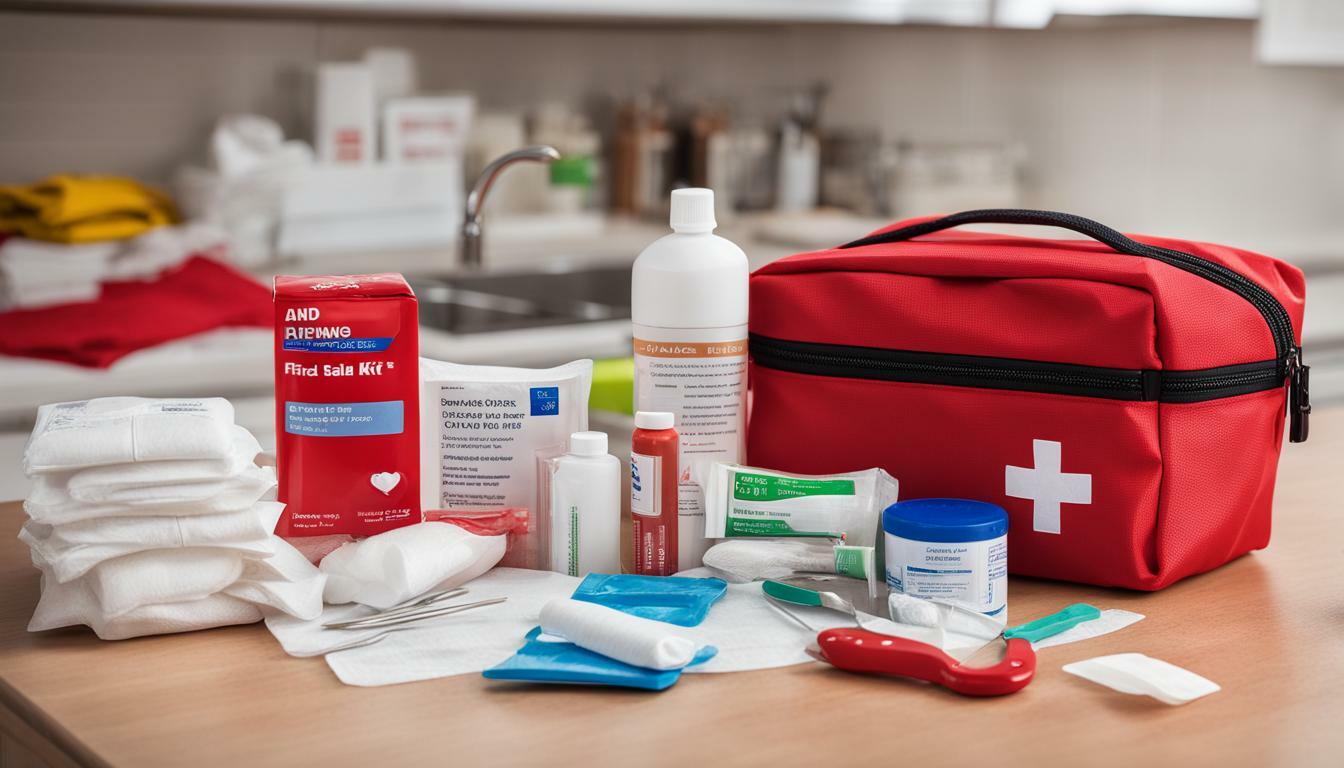Accidents happen, and in moments of crisis, a first aid kit can mean the difference between life and death. As a responsible parent or caregiver, it’s essential to have a well-equipped first aid kit in your home. First aid kits for families are designed to provide safety essentials for every home, ensuring that you are always prepared for any emergency.
First aid kits come in many shapes and sizes, and it’s crucial to select the right kit for your family’s needs. From basic kits to more extensive kits, there is a first aid kit suitable for every family. In this article, we will explore the importance of having a first aid kit in your home, how to choose the right kit, essential first aid supplies, and much more. Read on to learn how to keep your family safe and prepared for any emergency.
Key Takeaways
- First aid kits are essential safety gear for every home
- Choosing the right first aid kit for your family is paramount
- Regularly maintaining and checking your first aid kit is necessary
Why Every Home Needs a First Aid Kit
A home safety kit is an essential investment for every family. Accidents happen unexpectedly, and it is crucial to be well prepared to deal with them appropriately. A well-stocked first aid kit can help provide quick and efficient treatment to injuries and prevent further complications.
First aid kits for families should contain all the necessary items to treat injuries commonly caused by accidents at home, such as cuts, burns, and bruises. In addition to these, a home safety kit should also include specific items relevant to the family’s needs, such as medications for allergies or chronic illnesses.
Additionally, investing in a safety gear for families, such as smoke detectors, fire extinguishers, and carbon monoxide detectors, can help minimize the risk of accidents at home.
Why Every Home Needs a First Aid Kit
First aid kits for families are essential because they can help save lives in emergency situations. For instance, in cases of severe bleeding and allergic reactions, immediate medical attention is crucial in preventing further complications or even death. With a well-stocked first aid kit, the necessary treatment can be administered as quickly as possible while waiting for professional medical assistance.
Moreover, a home safety kit can also help reduce the severity of injuries. For example, applying a cold compress immediately to a burn injury can help minimize pain and prevent further damage to the affected area. This can potentially prevent the need for more extensive medical treatment, thus helping save time and money.
Investing in a first aid kit and safety gear for families shows that you are proactive and care about your family’s safety. Additionally, it can help give you peace of mind knowing that you are well prepared, should an emergency occur.

Overall, a first aid kit and safety gear for families are essential investments for every home. These items can help minimize the risk of accidents and provide quick and efficient treatment to injuries. Having a well-stocked first aid kit and safety gear in your home can help give you peace of mind knowing that you are well prepared for emergency situations.
Choosing the Right First Aid Kit for Your Family
Having a well-stocked first aid kit is essential for any household, but choosing the right one for your family can be overwhelming. With so many different first aid supplies and kits available, it can be challenging to know where to start. However, by following a few simple guidelines, it is possible to select a first aid kit that meets the unique needs of your family.
The first step in choosing a first aid kit is to assess your family’s specific needs. Does anyone in your family have any medical conditions that require specific supplies? Are you an active family that participates in outdoor activities? Do you have young children in the house? These are all essential considerations when selecting a first aid kit.
Once you have assessed your family’s needs, the next step is to create a first aid checklist of the supplies that you will need. A comprehensive checklist will ensure that you have everything you need to treat minor injuries, as well as more serious emergencies if they arise. A typical first aid kit should include:
- Bandages and dressings: To protect wounds and promote healing.
- Antiseptic wipes or spray: To clean wounds and prevent infection.
- Gloves: To prevent the spread of infection.
- Tweezers: To remove splinters or debris from wounds.
- Scissors: To cut tape, gauze, or clothing if necessary.
- Thermometer: To monitor fever or other symptoms.
- CPR mask: To aid in resuscitation if necessary.
- Pain relievers: For mild to moderate pain relief.
After creating your checklist, it’s time to consider the type of first aid kit that will meet your family’s needs. For example, if you have young children, you may want a kit that includes child-sized supplies and medications. Alternatively, if you participate in outdoor activities, you may need a first aid kit that includes supplies specific to outdoor injuries such as insect bites and poison ivy.
When selecting a first aid kit, it’s essential to choose a reputable brand that provides high-quality supplies. A well-made kit will last for several years and provide peace of mind in knowing that you are prepared for any emergency that may arise.
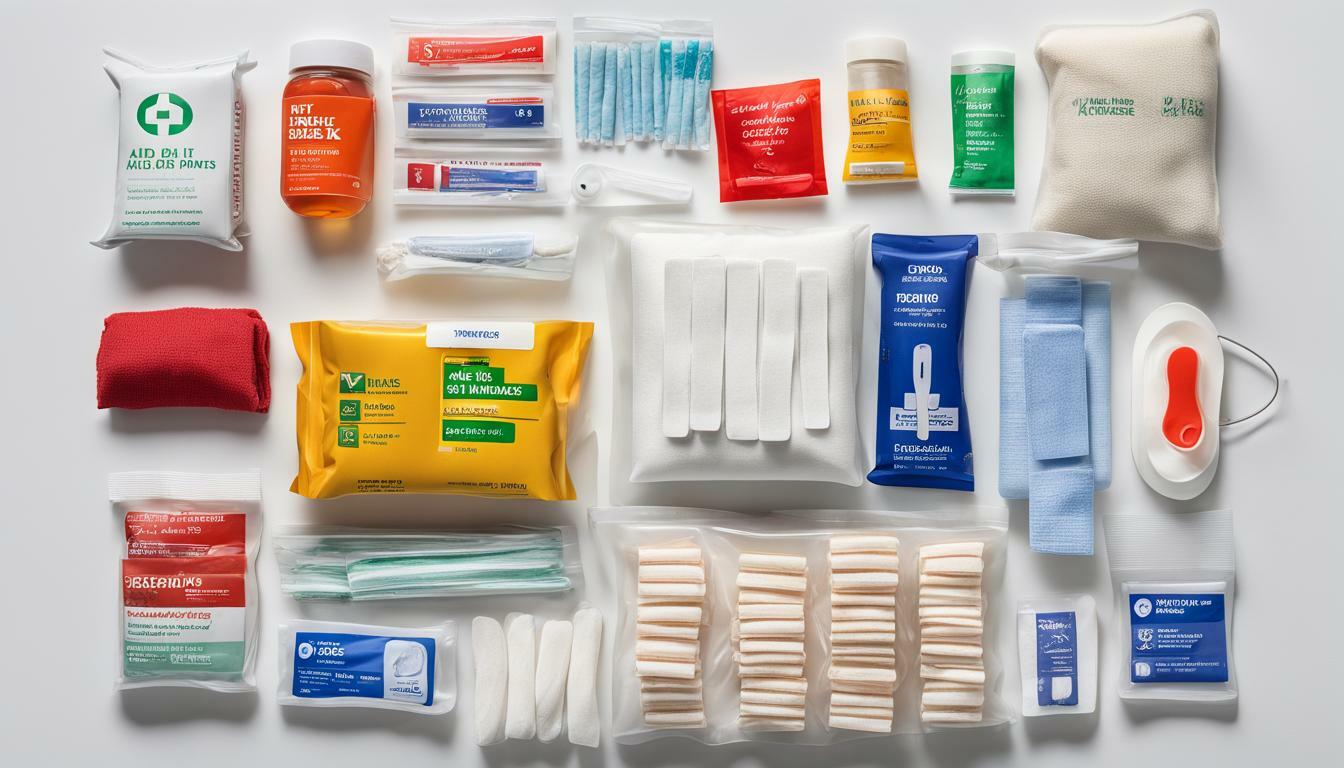
Overall, selecting the right first aid kit for your family is a critical part of your overall family safety equipment. By taking the time to assess your family’s needs, creating a checklist, and choosing a reputable brand, you can ensure that you have the essential first aid supplies on hand to deal with any emergency that may arise.
Essential First Aid Supplies for Families
Every home should have a first aid kit stocked with essential supplies for treating minor injuries and illnesses. These supplies are not only useful in emergency situations, but also for everyday cuts, scrapes, and bruises.
Some of the most important first aid supplies to have in your kit include:
| Supply | Purpose |
|---|---|
| Bandages (assorted sizes) | To cover and protect wounds |
| Gauze pads (assorted sizes) | To clean and dress wounds |
| Adhesive tape | To secure bandages and gauze in place |
| Tweezers | To remove splinters or debris from wounds |
| Scissors | To cut tape, gauze, or clothing for access to wounds |
| Antibiotic ointment | To prevent infection in wounds |
| Antiseptic wipes | To clean wounds and prevent infection |
| Instant ice pack | To reduce swelling and bruising |
| Gloves | To protect against bodily fluids and infection |
| Thermometer | To monitor fever or body temperature |
Additional supplies that may be helpful to have in your first aid kit include pain relievers, allergy medication, cough drops, and other over-the-counter medicines. However, it’s important to consult with a healthcare professional before adding any medication to your kit.
It’s also important to regularly check and replenish your first aid supplies to ensure they are up-to-date and not expired. Keep your first aid kit in an easily accessible and visible location in your home, and make sure all family members know where it is and how to use it in case of an emergency.
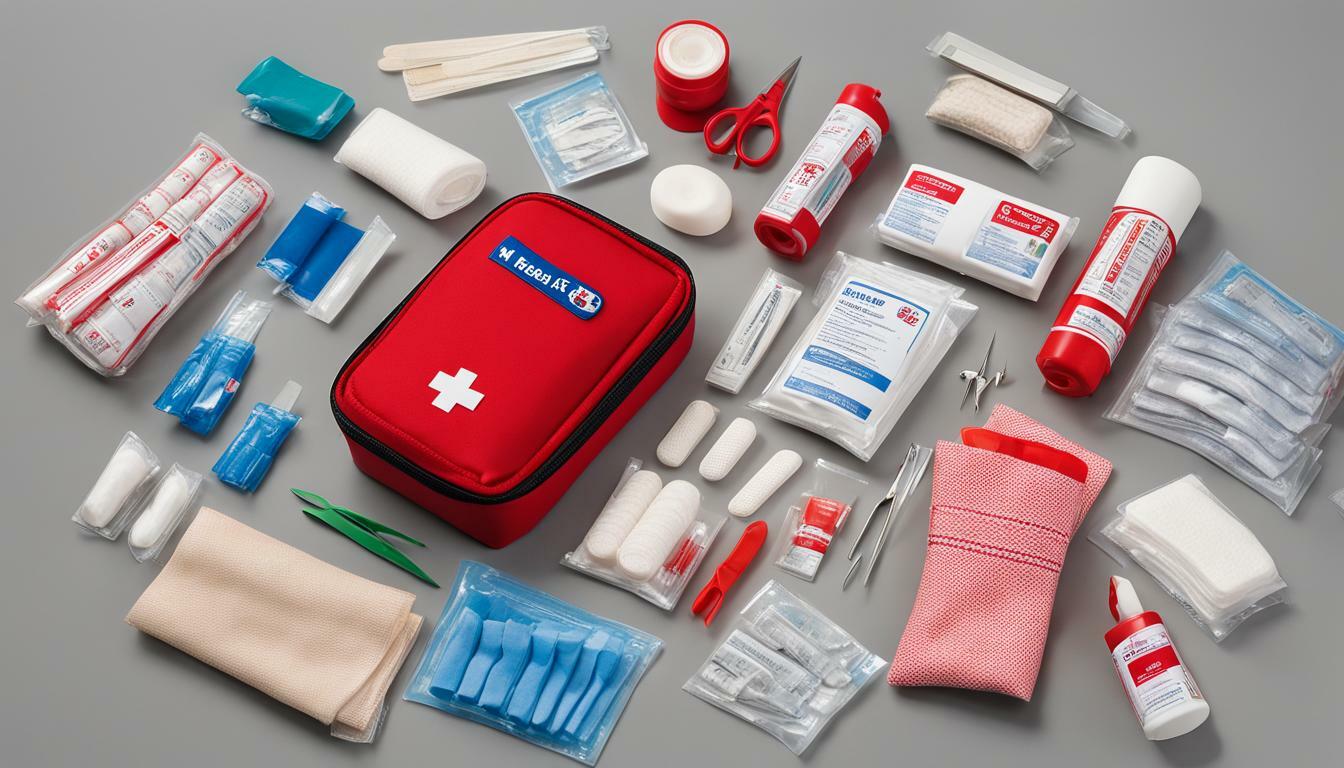
Creating a Medical Emergency Preparedness Plan
Every family should have a medical emergency preparedness plan. Being prepared for the unexpected can help you stay calm and make quick decisions in an emergency. Here are some steps you can take to create a plan:
- Identify potential emergencies: Make a list of all the possible emergencies that could happen in your area. This could include natural disasters like floods or hurricanes, as well as medical emergencies like heart attacks or allergic reactions.
- Make a plan: Once you’ve identified potential emergencies, create a plan for each one. This should include things like evacuation routes, meeting places, and emergency contacts. Make sure everyone in your family knows the plan and how to execute it.
- Prepare a first aid kit: Make sure you have a well-stocked first aid kit in your home and in your car. This should include basic first aid supplies like bandages, antiseptic, and pain relievers.
- Learn first aid: Take a first aid class so that you know how to respond in an emergency. This could help save someone’s life.
- Practice your plan: Do practice drills with your family so that everyone knows what to do in an emergency. This can help reduce panic and stress if an emergency does occur.
Having a medical emergency preparedness plan can make a big difference in how you handle an emergency. It’s important to be prepared for anything that could happen so that you can keep your family safe. Don’t forget to include your first aid kit and other safety gear in your plan.

Teaching First Aid Skills to Your Family
Having a well-stocked first aid kit is essential for every home, but it is equally important to know how to use the supplies in case of an emergency. Teaching first aid skills to your family can help everyone feel more confident in their ability to handle medical situations that may arise. It is also a great way to bond as a family and promote safety awareness.
Start by creating a basic first aid kit and reviewing the contents with your family. Explain the purpose of each item and how to use it properly. Consider including items such as bandages, antiseptic wipes, gauze pads, tweezers, and scissors.
Next, teach your family how to handle common injuries such as cuts, burns, and bruises. Demonstrate the correct way to clean and dress a wound, and explain when to seek medical attention. Practice these skills on each other so that everyone feels comfortable and confident in their ability to provide first aid.
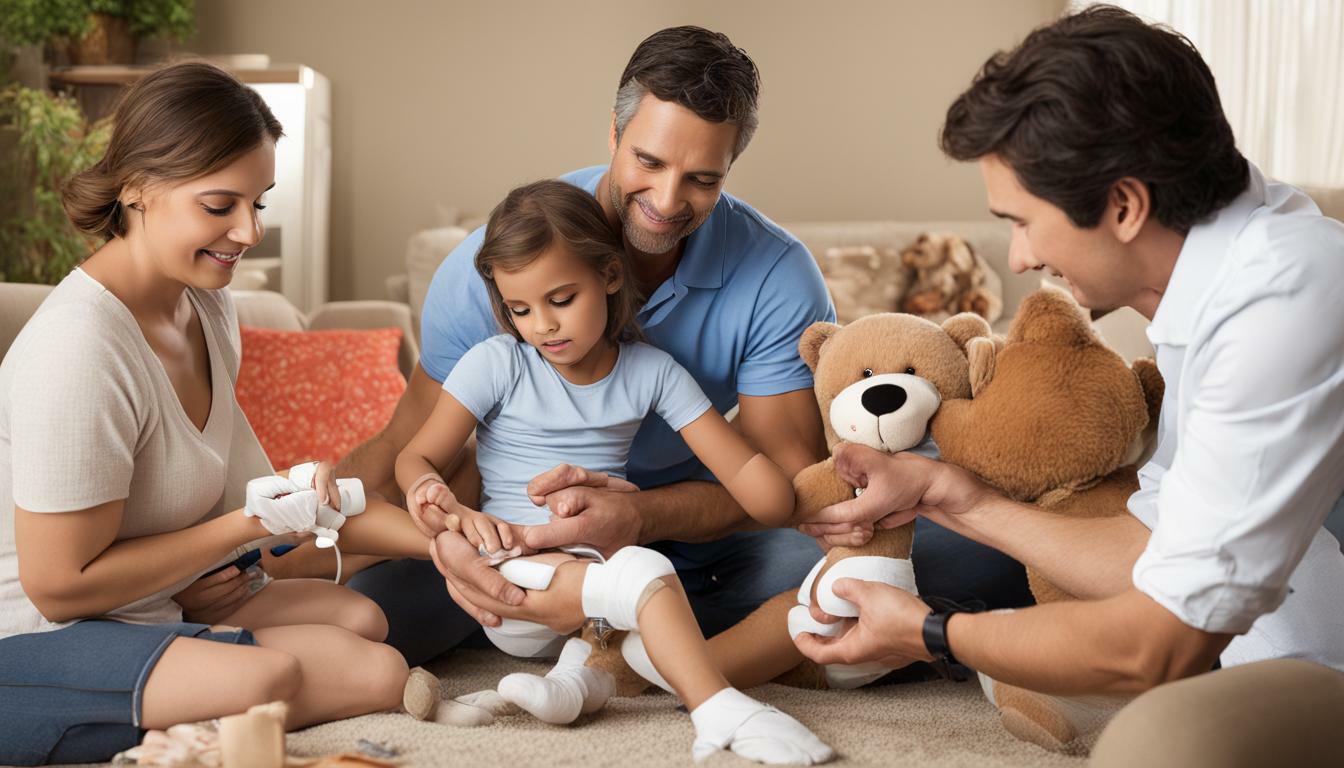
It is also important to educate your family on the importance of calling for help in an emergency. Teach them how to call for emergency services and provide them with important information such as your home address and contact numbers.
Consider enrolling your family in a first aid and CPR course to gain more in-depth knowledge and skills. Many organizations offer these courses online, making it easy for everyone to learn from the comfort of their own home. Make sure to review and refresh these skills regularly to ensure readiness in case of an emergency.
Teaching your family first aid skills is an essential part of your family’s safety plan. By taking the time to prepare and educate everyone about first aid, you can feel confident that your family is well-equipped to handle any medical situation that may arise.
Additional Safety Measures for Family Homes
Aside from having a well-stocked first aid kit, there are several other safety measures families can implement to ensure the safety of their loved ones in the home.
Fire Safety
Make sure smoke alarms are installed in every room of the house, and replace the batteries every six months. Have an escape plan in place and practice it with your family regularly. Additionally, consider purchasing fire extinguishers for your home and learn how to use them.
Childproofing
If you have young children in your home, it’s important to take the necessary steps to childproof areas such as cabinets, drawers, and electrical outlets. Install safety gates at the top and bottom of stairs and ensure that all heavy furniture is secured to the wall to prevent tipping.
Home Security
Ensure that all entrances to the home have secure locks and consider installing a security system. Teach your family about the importance of home security, including not opening the door to strangers and being mindful of leaving doors and windows unlocked.
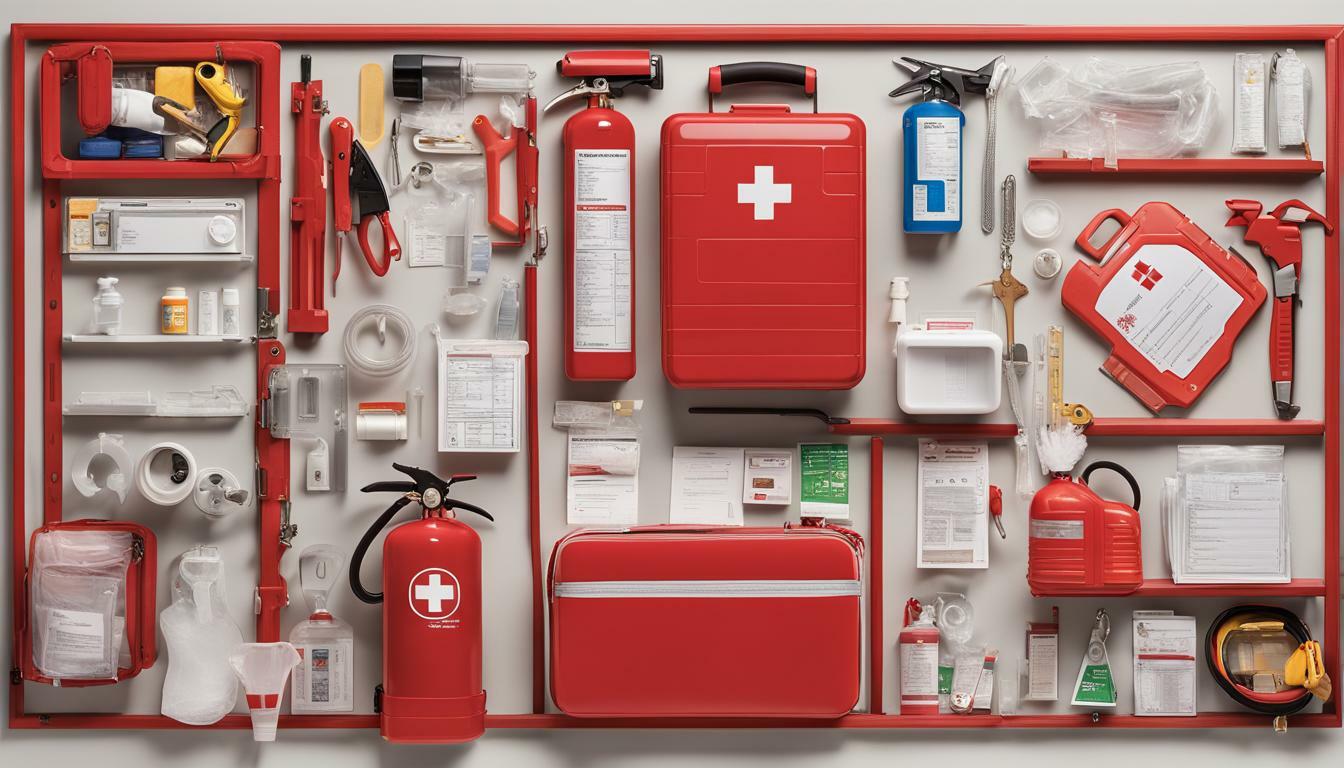
Emergency Contact Information
Make sure that emergency contact information is easily accessible to everyone in the household, including phone numbers for local emergency services and important family contacts. Consider also keeping a copy of your medical information and up-to-date medication list in a prominent location, such as on the refrigerator.
Regular Maintenance Checks
Regularly check all safety equipment in the home, including smoke detectors, fire extinguishers, and first aid kits. Replace or replenish any supplies that are expired or used up.
By implementing these additional safety measures, families can better protect themselves and ensure that they are well-prepared in the event of an emergency.
First Aid Kits for Specific Family Needs
While every household needs a basic first aid kit, it’s also important to consider any specific needs your family may have. For example, if anyone in your household has allergies or requires medication, make sure to include the appropriate items in your first aid kit.
Having a child with asthma? Be sure to include a spare inhaler and any necessary medication. If someone in your family has a severe allergy, keep an epinephrine auto-injector on hand.
If you have young children, consider adding items like infant fever-reducing medication, teething gel, and a nasal aspirator to your kit. Remember to regularly check expiration dates and replace items as needed.
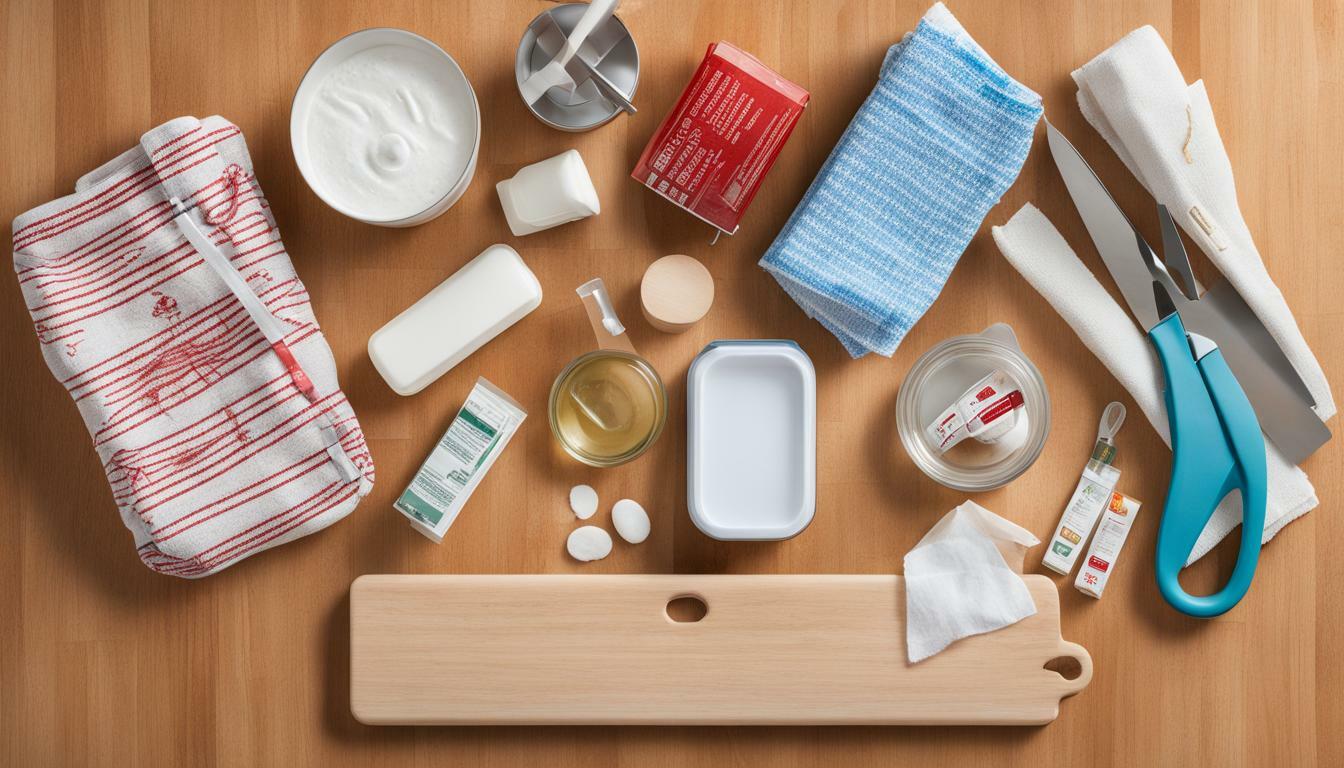
Family Camping and Outdoor Activities
For families who enjoy camping and other outdoor activities, it’s important to have a first aid kit that can handle the unique risks of being out in nature. Make sure your kit includes items like insect repellent, sunscreen, and a snake bite kit if you’re in an area with venomous snakes.
It’s also a good idea to have items like water purification tablets, a water-resistant flashlight, and a whistle for signaling in case of an emergency. Don’t forget to pack a first aid manual and any necessary medication for family members with medical conditions.
Remember, being prepared is key to staying safe during outdoor activities. Before heading out, research the area you’ll be in and make sure your first aid kit is tailored to the specific needs of your family and the location you’ll be visiting.
First Aid Kits for Travel and Outdoor Activities
Accidents can happen anywhere, so it’s important to have a properly equipped first aid kit when travelling or participating in outdoor activities. A first aid kit can provide comfort and care in emergencies, ensuring that minor injuries don’t become major problems.
When choosing a first aid kit for travel or outdoor activities, think about the duration and location of your trip. A small kit may suffice for a day trip, but a larger kit with more supplies may be necessary for longer excursions or more remote destinations. Look for kits that are lightweight, waterproof, and easy to carry in a backpack or suitcase.
| First Aid Kit Essentials for Travel and Outdoor Activities |
|---|
| Adhesive bandages and tape |
| Gauze pads and wrap |
| Antibacterial ointment and wipes |
| Pain relievers and anti-inflammatory medication |
| Tweezers and small scissors |
| Thermometer and emergency blanket |
While the items listed above are essential for any first aid kit for travel or outdoor activities, it’s also important to consider any specific needs for your family. If a member of your family has allergies or medical conditions, be sure to include any necessary medications or supplies in your kit.
Don’t forget to regularly check and update your first aid kit to ensure it’s fully stocked and up to date with any necessary medications or supplies.
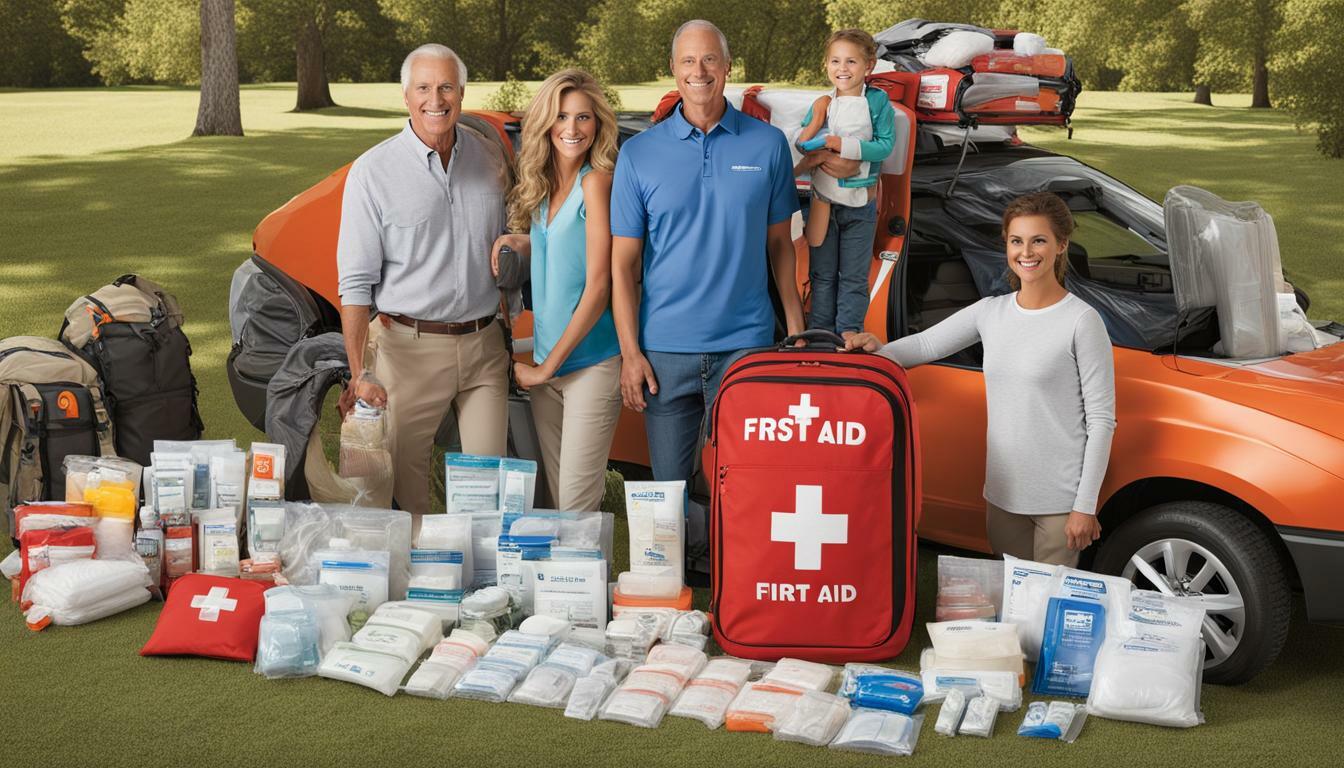
Having a well-stocked and properly equipped first aid kit is essential for any family, whether at home or on the go. By taking the time to choose the right kit and regularly maintaining it, you can be confident in your family’s safety and well-being in any situation.
Staying Calm in Emergencies: Dealing with Panic and Stress
When an emergency occurs, it can be difficult to remain calm and focused. However, staying calm is important as it allows you to assess the situation and take action quickly and efficiently. Here are some tips on how to stay calm during an emergency:
- Breathe: Taking deep breaths can help calm your nerves and slow down your heart rate, allowing you to think more clearly.
- Stay focused: Try to stay focused on the task at hand and avoid getting sidetracked by other things.
- Remain positive: Keeping a positive attitude can help you stay calm and focused during an emergency.
- Take action: If you are able to, take action to resolve the emergency as quickly as possible. This can help you stay focused and calm.
Remember, staying calm is not only important for dealing with the emergency at hand, but it can also help prevent further accidents or injuries from occurring.
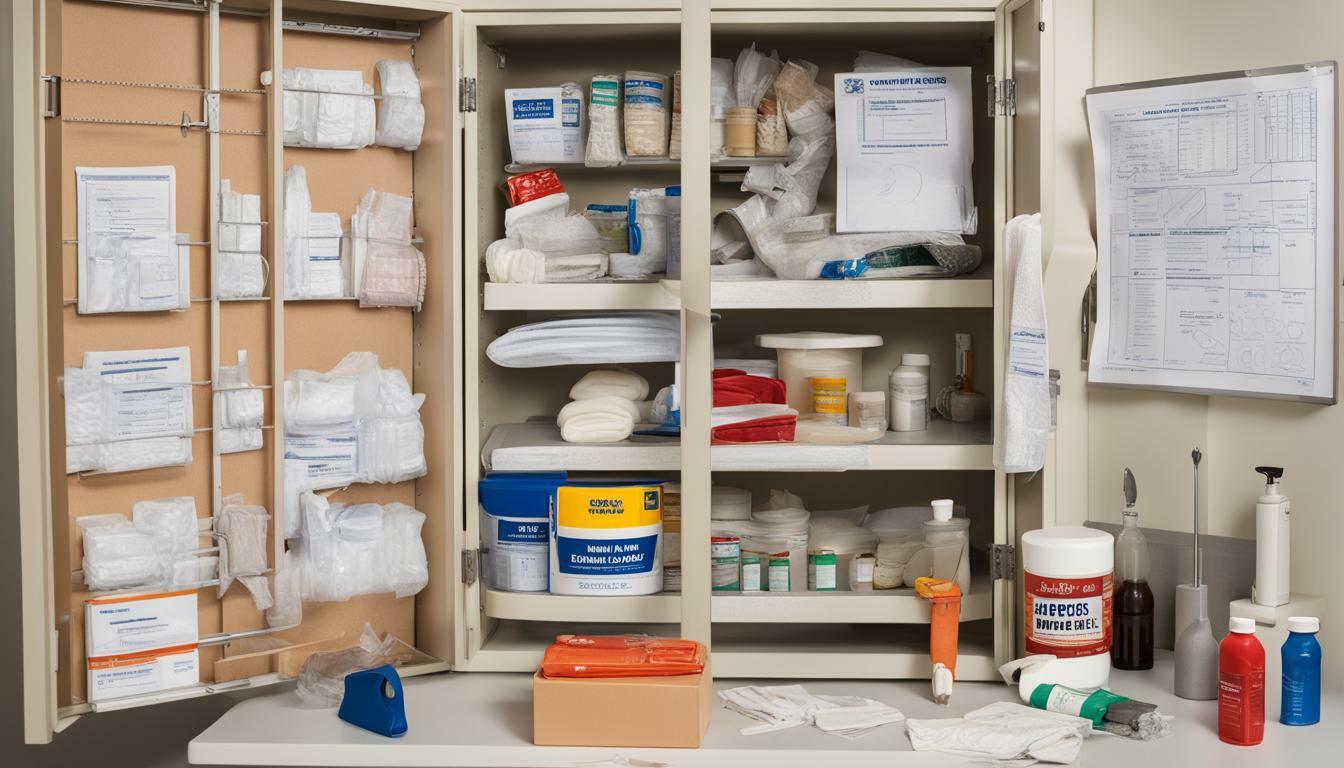
In addition to having a well-stocked first aid kit, make sure your family knows how to use it and is familiar with basic first aid techniques. This can help them stay calm and confident during an emergency.
Finally, consider taking a first aid course. This can help you and your family feel more prepared and confident in dealing with emergencies. It’s always better to be safe than sorry, and having the proper skills and knowledge can make all the difference in an emergency situation.
First Aid Kit Maintenance and Regular Checks
Now that you have assembled your first aid kit, it’s important to ensure that it is always ready for use in case of an emergency. Regular checks of your first aid supplies are vital for maintaining the safety of your family and keeping your kit up-to-date.
Checking your first aid kit regularly and restocking items that have been used or have expired is essential. Keep an eye on expiration dates and replace any items that have passed their expiry date. Store your kit in a cool, dry place, and ensure that it is easily accessible so that you can quickly grab it in case of an emergency.
Make sure that all items are clean and free from damage. Check the packaging of your supplies to ensure that they are still intact and any seals have not been broken. If any items are damaged or contaminated, it’s important to replace them to ensure that your kit remains sterile and safe for use.
Regular checks of your first aid kit will help you to keep your supplies up-to-date and ensure that you are always prepared for any emergency. By following these simple steps, you can ensure that your first aid kit remains a reliable and essential safety gear for your family.
It’s important to teach your family how to use the first aid kit and its supplies as well as how to conduct regular checks. By doing so, you can ensure that everyone is aware of the kit’s contents, how to use them when necessary, and how to keep the supplies in good condition for when they are needed.
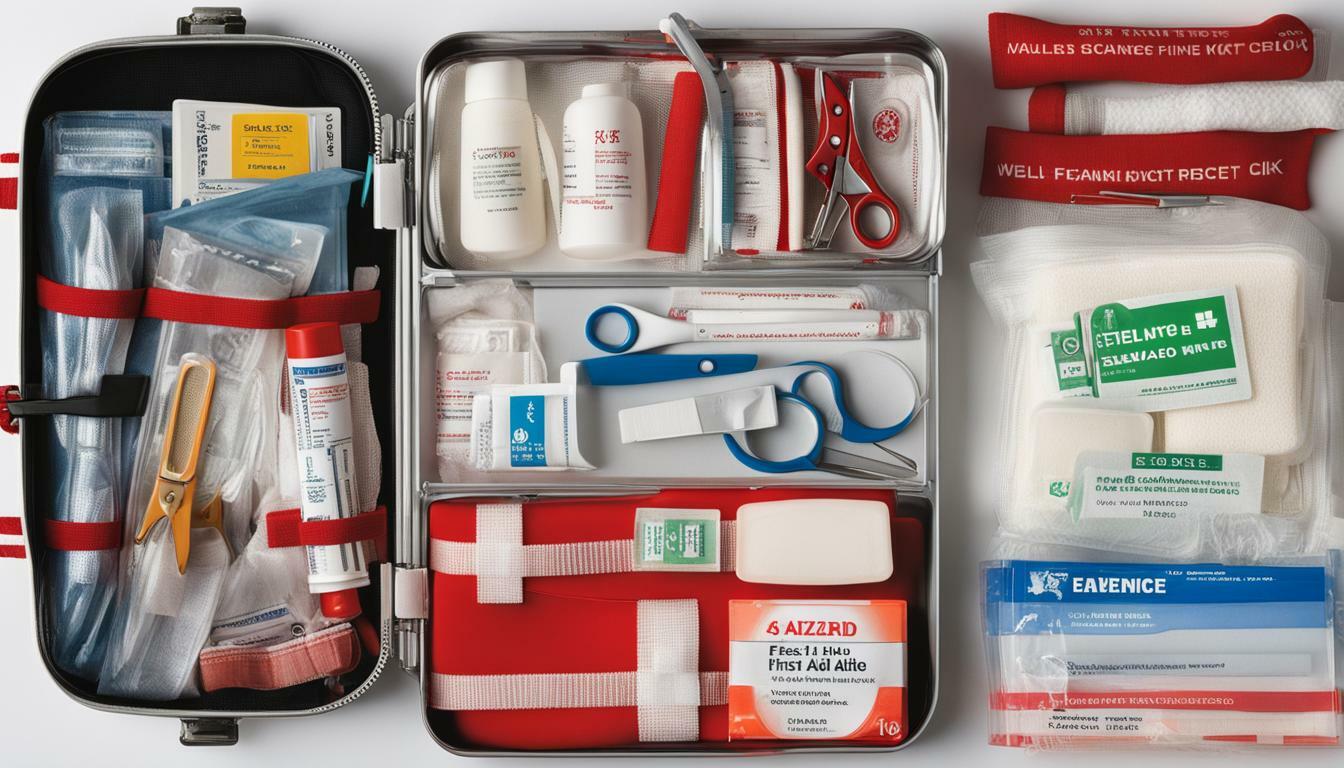
Conclusion
First aid kits are safety essentials that every home should have. They provide necessary supplies and equipment to deal with emergencies and prepare your family for unexpected situations. By choosing the right first aid kit for your family and regularly checking and maintaining it, you can ensure that your home is prepared for any medical emergency.
Remember, safety first
When it comes to family safety, there is no room for compromise. Make sure you have the necessary first aid supplies and equipment in your home, and teach your family the essential skills to deal with an emergency.
By following the tips and guidelines outlined in this article, you can create a medical emergency preparedness plan that suits your family’s needs and helps you stay calm and in control in any situation.
Remember: accidents can happen at any time. Be prepared, be safe, and take care of your loved ones.
